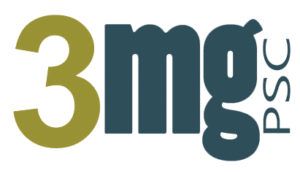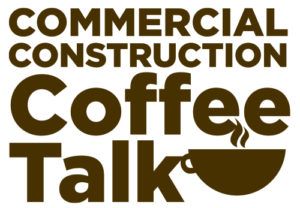Picking between architecture firms and freelance architects can hit like a ton of bricks, especially with a dream project riding on the call. Each route dishes out its own flavor of strengths, perfectly seasoned for different needs, budgets, and big ideas. Firms roll in with teamwork and hefty resources, while freelancers sling flexibility and a personal vibe. This essay digs deep into the meat of both options, slicing through key areas to shine a light on which path syncs up with your ambitions.
Scope of Services Offered
Architecture firms deliver a powerhouse of services all in one place. They rally teams of architects, designers, and engineers who dive into every phase—from rough sketches to watching the final beams go up. Clients score big with this full-package deal, especially on tricky builds like office towers or apartment complexes. The firm’s deep bench of know-how tackles every angle, from rock-solid structures to zoning rules and sleek interiors, with razor-sharp precision. Freelance architects, on the flip side, keep things tighter but excel at personal flair. These solo stars often focus on homes, remodels, or smaller projects, staying glued to the job from start to end. Without a big crew, they might tap outside experts for stuff like wiring plans, which can add a bit of lag. Even so, their knack for quick pivots and custom touches makes them a go-to for anyone craving a hands-on, bespoke vibe.
Project Scale and Complexity
Big projects scream for architecture firms to take the wheel. Picture skyscrapers piercing the clouds, hospitals buzzing with life, or sprawling campuses stretching wide—these beasts crave a symphony of skills working in lockstep. Firms unleash specialized crews to keep deadlines tight and budgets from ballooning out of hand. With cutting-edge software and a bench full of in-house pros, they tackle complex designs with ease, churning out sleek, finished products for the boldest visions. Freelancers thrive on smaller, less complicated gigs. A cozy home remodel or a boutique storefront fits their wheelhouse perfectly. They manage every step personally, which works wonders when the project doesn’t require heavy lifting from a full crew. For anything bigger, they might stretch thin or need to outsource, potentially complicating timelines. Clients with modest plans, though, often find this direct oversight refreshing and effective.
Cost Considerations
Budget plays a massive role, and firms tend to charge more upfront. Their fees reflect overhead—think office space, staff salaries, and cutting-edge tools. For high-stakes projects, this investment pays off through efficiency and reduced errors, saving money long-term. Clients get a structured pricing model, too, with clear breakdowns for each phase, which helps avoid surprises down the line. Freelancers usually come in cheaper, appealing to tighter wallets. Operating solo keeps their costs low, and they pass those savings along. Flexibility in pricing, like hourly rates or flat fees, gives clients room to negotiate. Hidden costs can creep in, though—if extra expertise gets roped in, expenses might climb. Still, for smaller jobs, their lean setup often translates to a lighter financial load.
Collaboration and Communication
Working with architecture firms means dealing with a team dynamic. Multiple voices contribute ideas, which can spark brilliance or, occasionally, slow decisions as consensus builds. Clients typically interact through a project manager who streamlines updates and feedback. This setup suits those who prefer a polished, professional exchange and don’t mind less direct access to the lead architect. Freelancers offer a one-on-one connection that feels more intimate. Questions get answered fast, and changes happen without layers of approval. This direct line fosters trust, especially for clients who value constant input. On the flip side, a single point of contact means delays if the freelancer’s plate gets too full. For those craving personal attention, though, this closeness outweighs the risks.
Timeline and Availability
Firms excel at meeting tight deadlines thanks to their manpower. Multiple team members tackle tasks simultaneously—permits, drawings, revisions—keeping momentum strong. Their established processes and resources, like architecture firms’ robust networks of contractors, smooth out hiccups fast. Clients with urgent schedules, like businesses racing to open, find this reliability a major draw, even if it comes with less flexibility. Freelancers work at their own pace, which can stretch timelines. Handling everything solo limits how much they juggle at once, so overlapping projects might push deadlines back. That said, their schedules often flex more easily—last-minute tweaks don’t need committee approval. Clients willing to trade speed for adaptability appreciate this, especially on projects with room to breathe.
Creative Control and Vision
Firms bring polished, collaborative creativity to the table. Their teams blend diverse perspectives, refining concepts into something sleek and functional. Clients might not dictate every detail, though—firm styles or workflows can steer the outcome. For those who trust a group’s expertise to elevate their vision, this trade-off feels worthwhile, delivering results with a professional sheen. Freelancers hand over more creative reins. They mold designs around a client’s exact wishes, tweaking them until it’s spot-on. This freedom shines in unique or quirky projects where personal flair matters most. The catch? Their vision might lean on their individual strengths, lacking the breadth a firm’s team offers. Clients craving a bespoke stamp often find this intimacy a perfect fit.
Conclusion
Choosing between architecture firms and freelance architects hinges on what matters most—scale, budget, speed, or personal touch. Firms deliver horsepower for big, complex builds with tight timelines, while freelancers shine in smaller, custom jobs where flexibility rules. Weighing priorities like cost and creative input narrows the decision. Either way, aligning with the right fit ensures a project that not only stands tall but feels distinctly yours.



























